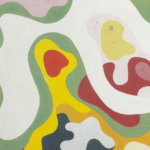
Ibirapuera
Yulia LeonovaIn 1953 a Brazilian landscape architect Roberto Burle Marx designed the project of Ibirapuera park, which was to be the site of the 1954 cultural celebrations, marking the Fourth Centennial of the City of São Paulo. A vast territory inside the city was reserved as an artificially natural representation of some kind of finalization of the cultural project by Brazilian intellectuals in the search and formation of their national identity: Brasilidade.
For Burle Marx his participation in the project was also breaking a significant and personal boundary; he wrote: “I was enthusiastic: for the first time, perhaps, I had a chance to develop and expand my ideas on a contemporary garden style, which I had been evolving over a period of twenty years. This was to be the summing up of concepts of composition, of the search for a Brazilian plant vocabulary.”
This project of Burle Marx was not fated to be implemented. It exists on paper only, which attracted our attention as a case of the idealized park of cultural achievements. At the same time, multiple implemented gardens of this exceptionally prolific architect are rich with the keys to the cultural discourse on the search of Brasilidade, which is possible through the perception of its design.
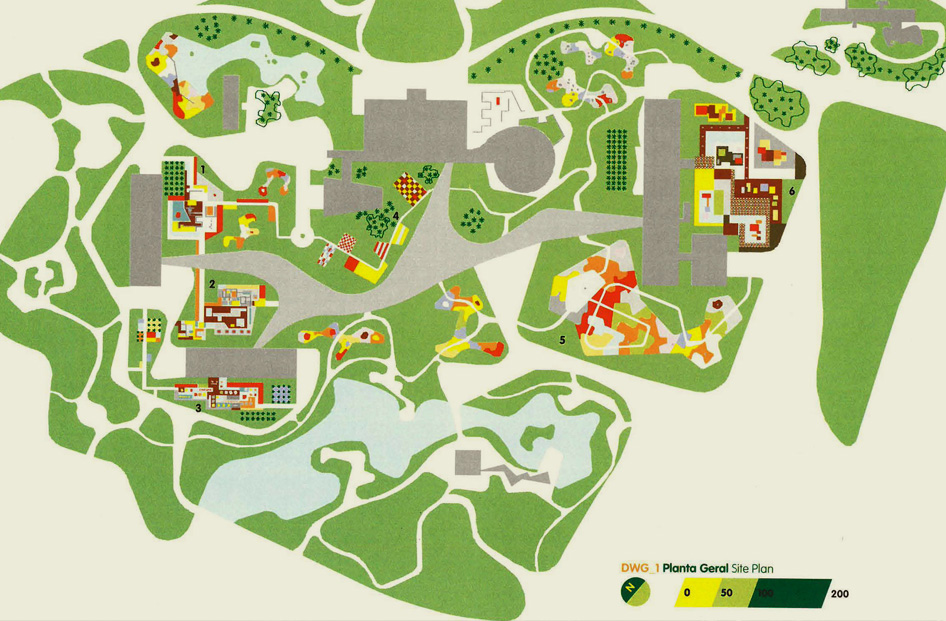
He called himself a landscape painter-architect. His unique style was based on the aesthetics of modernism, and the plans of his gardens look like abstract paintings. He was indeed a splendid artist, creating his “plant puzzles, composed of foliage, and flowering plants in the brightest colors imaginable, and in the free forms of an abstract painting.” As a sculptor he “experimented with free forms in an interplay of plant and building materials used as textures”, and as a kinetic avant-gardist he intended to “use plants as volume in motion, against the fixed volume of the architecture.” His art was incredible spectacular, but it was his participation in the Brazilian cultural project that extended boundaries of his individual fame. The eccentric name of the initial stage of this project was: Antropofagia.
Manifesto Antropófago by Oswald de Andrade, published in the late 20s, proclaimed “that Brazil’s strength lay in feeding on European culture,” as Fraser put it. For the descendants of the colonizers the European culture had always remained a role model, and a metaphor for cannibalism interpreted this like a proud absorption i.e. devouring of this culture – approximately the same as a ritual of savages, eating the heart and brain of the defeated enemy in order to take possession of their courage and mind. Besides that, a game with savages theme, dangerous and attractively vivid exotics of the Indians of the Amazon suggested a variety of artistic opportunities. Along with the interest to the wild tribes the attention turned to the animals and plants: to the jungle. Before that moment it was an unfamiliar, deadly dangerous wild nature, Inferno Verde, Green Hell, as the colonizers called it, a territory, hostile even to the South American Indians, who practiced burning out the woods around their settlements.
Young Roberto Burle Marx entered a new discourse; as a landscape architect he was the one who brought the jungle to a city. It is notable, that Burle Marx, who was born and grew up in Brazil, for the first time actually saw the beauty of Brazilian nature in Germany, in the orangery of the Botanical Garden in Dahlem, when he arrived to Berlin to study painting in 1928. (Dahlem Orangeries throws us back to other artificial natures of our project – Crystal Palace, Garden City, Alpine Architektur.)
Upon his return to the homeland he initiated a search, introduction and popularization of the wild Flora of Brazil to public parks and private gardens. His educational, cultural and ecological mission lasted throughout his long artistic journey; his numerous expeditions resulted in the creation of his own artificial nature – Sitio Burle Marx in the manor Barra De Guaratiba – a huge landscape park and a nursery garden for several thousand species of plants.
His landscape arrangements were inspired by the natural zones of Brazil – Igapó, Caatinga, Cerrado. In the project of Ibirapuera park there are small islands with palm-trees, floating on the water – he was inspired by the similar ones in “the trip to an Amazonian igapo (flooded region), where the vegetation islands glide over the serene waters like houses built on rafts.” As remembered by Marta Iris Montero, experimenting with plants he himself invented an ironical phrase to define his gardens: ‘artificial ecological associations’.Water and minerals were the essential elements of his gardens, many if not all of them, were semi-aquatic; he used water as liquid columns and sculptures. A subject of his special admiration was “a wonderful demonstration of balance, even symbiosis between the vegetal and the mineral.”
The plants growing on the rocks are of a special importance; they are used for jardin sur dalle, the gardens built on concrete slabs, on the roofs and platforms– the key landscape companions to the modernist architecture. The iconic roof garden of MES building in Rio de Janeiro, built by the group of architects, among which were Lúcio Costa, Oscar Niemeyer, and Le Corbusier as co-designer, was one of the first projects of that kind by Burle Marx. He remembered, that “when Le Corbusier came as consultant to the architects planning the Ministry of Education and Health, he spoke of the recovery of space at all costs, so that Man might regain his communion with Nature; of the roof garden; of the space over an extended wing; of the hollows under the building at pilotis level.”
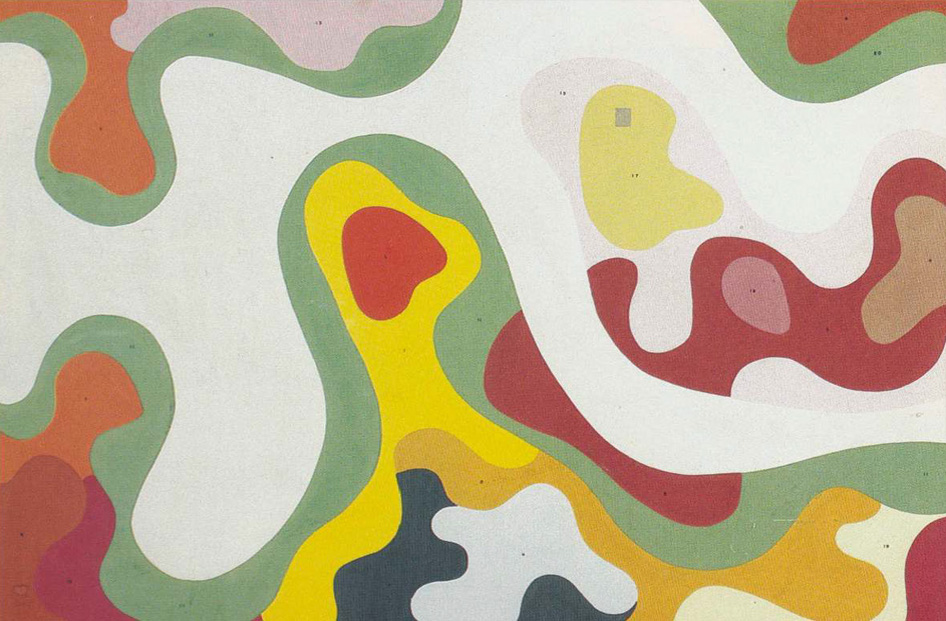
Oscar Niemeyer was in charge of the Ibirapuera Park Project, having several cultural and representative buildings for it in the plan – Palace of Industry, Palace of Nations, Palace of States, a planetarium, a theater, and also a distinctive architectural structure – a large sinuous marquee covering the connecting esplanade.
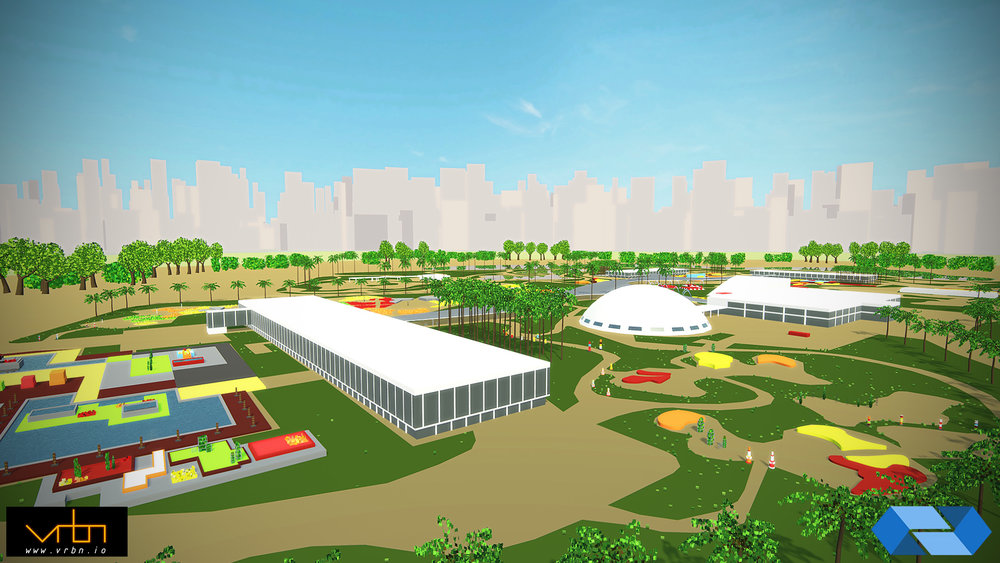
The marquee connected buildings, arranged freely in the park; and the gardens of Burle Marx, as he described, “linked one to the other, had to provide a different experience, but each accompanying the architectural unit to which it is related. The link between the gardens is a free form; but since the marquee is also free-flowing I decided that the gardens should have the characteristics of an asymmetrical layout with geometric detail. “ Had the project of Burle Marx been implemented, Ibirapuera park could have been a materialized metaphor of the union of the jungle and modernism.
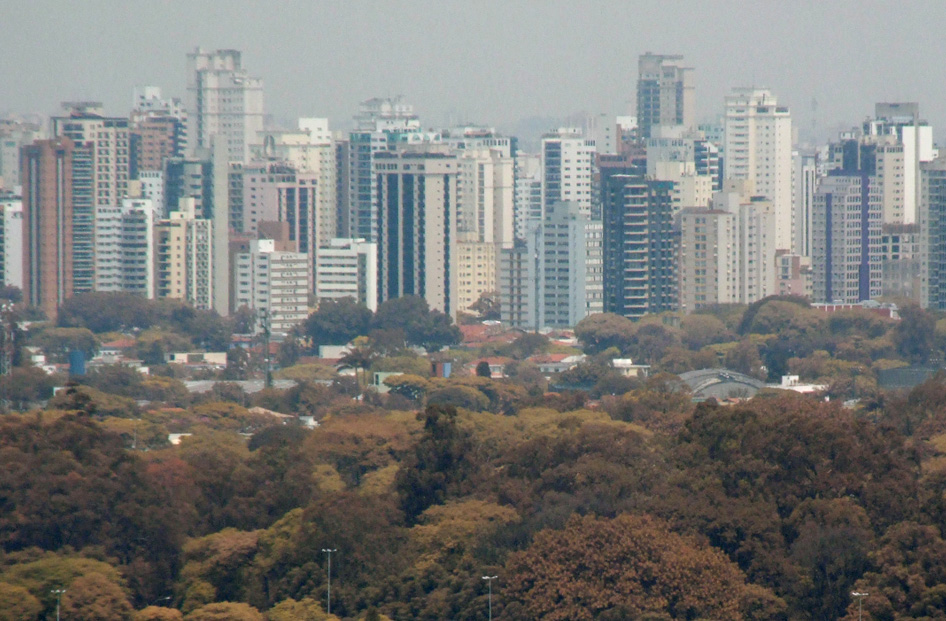
Aerial photographs and the imagined reconstruction of the park create its spatial form as a kind of Mise en abyme principle (”matryoshka principle“or ”nested doll principle”), where the city is embedded in a green mass of the jungle; the park/jungle is embedded in the city; the park, in its turn, accommodates a modernist architectural complex, amongst which the gardens of Burle Marx reminds us of the wild natural zones of Brazil; while the insides of the gardens are decorated with the modernist sculptures and the jungle plants inserted into them.
These totem-like wire sculptures with the inserted ampel plants were one of the favourite elements of his landscape design, which was incredibly rich in ethnic, cultural and historical references, including: Calçada Portuguese (the Portuguese pavement), azulejos, historical gardens reminiscences.
Burle Marx practiced the traditional Portuguese paving technique of calçada portuguesa in all his parks, and always introduced in their two- or three-coloured patterns an association – in the Geometric Garden of Ibirapuera it was based on the carpet patterns from Bahia. The best known paving by Burle Marx is a promenade along the beaches of Copacabana in Rio de Janeiro; there a pattern of his waves repeats the one of the old Avenida Atlantica, which, in its turn, recalls to the period of paving squares in Portugal – ? technique, revived by Eusebio Pinheiro Furtado, the governor of Castelo de Sao Jorge, in Lisbon in the 1840s. A chain can be traced further – to black-and-white mosaic of Ostia and up to the pebble mosaic of Gordion of the 8th century BC. Among Burle Marx’ citations a special place in the chain belongs to Conimbriga, a Roman settlement of the 2nd century BC. It is well known in Portugal, as its large-scale excavations, carried out in the 30s of the last century, were widely covered by the media.
Thus, despite all the revolutionary innovation of modernism, Roberto Burle Marx introduced graphic and at the same time topographic representation of the national history to his landscapes, not neglecting cultural Antropofagia, one of the components of which was the devouring of the European culture, and the other – the customs of the savages themselves. Apart from the famous waves, four kilometers of Copacabana promenade are covered with an endless non-repeating pattern, originating from the tattoo patterns of a native Brazilian tribe, the Caduveo Indians of Mato Grosso, researches say. The tattoos have attracted the attention of Guido Boggiani, an Italian researcher, and Claude Levi-Strauss, an anthropologist, who described the Caduveo graphic art as unique in all of pre-Columbian America. As Seavitt pointed it, “the Caduveo did not just develop a patterning strategy of loose repetitions within an irregular frame; they developed a way of patterning open geometries on the topographical surface of the face.” It can be said that using Caduveo’s method of body mapping, Burle Marx were tattooing the cultivated ground, semiotized the territory of his artificial natures.
It may not always be easy to decipher behind the extremal modernist style, but the gardens of Ibirapuera were full of quotes. Some of them are inspired entirely by the historical examples from the Islamic, ancient, Renaissance gardens. Describing the Fountain Path garden, he wrote: “In its present form, I feel sure it has never have been done before; but in Spain, in the Boboli Gardens in Florence, and at the Villa d’Este, crossing arches of water spring up on either side of paths as the visitor walks along.”
The Geometric Garden was inspired by the central peristyle of the House of the Fountains in Conimbriga, and all other gardens of the project Ibirapuera relate to the principle of Roman atrium.
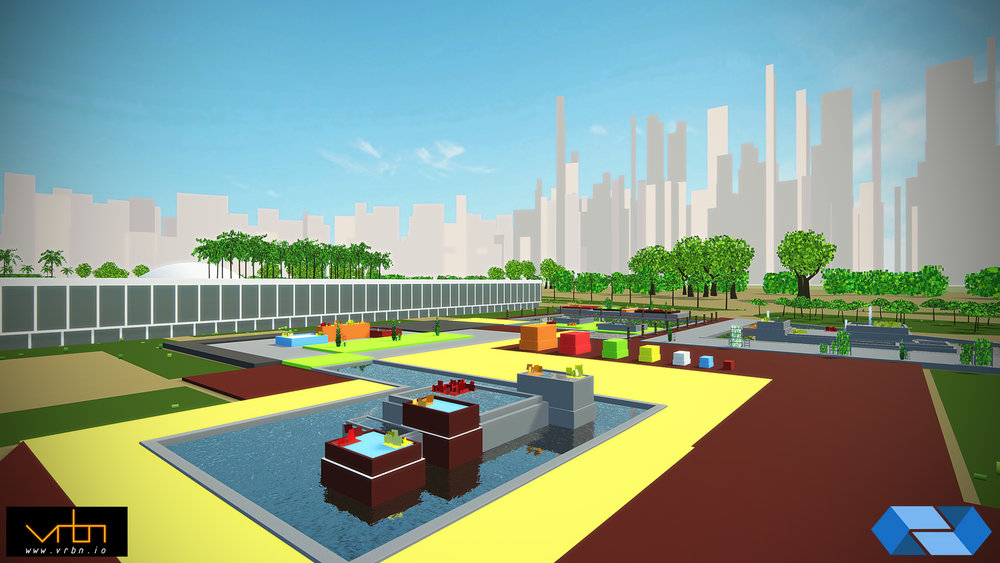
As Seavitt points, other solutions remind of ‘the Moorish gardens of southern Spain, in particular the Alcazar gardens of Seville and the Alhambra and Generalife complex at Grenada. The Islamic culture of the Moors and Berbers brought to Spain and Portugal both a love for intimate gardens and the knowledge of irrigation techniques.’ (As many other amazing bonds made throughout centuries and continents, this one connects Ibirapuera World and the Islamic Garden, another World among our Artificial Natures). Not less thrilling as Calçada Portuguese path, is the story of the development of azulejos, decorated ceramic tiles, from the Arabic to Portuguese tradition, and further to the Brazilian one – traditional at first, and then interpreted in modernist way by Burle Marx and Cândido Portinari.
The Suspended Path Garden of Ibirapuera has its own version of observation platform the architect planned it as a viewpoint, offering to enjoy the piece of land art he had created. He described it as so: “spatial and artistic experiences of widely differing natures would come to each spectator viewing the garden and participating in it at ground level, who would gradually lose this relation to the plant volume and the fixed stone volume as he rose above to the platform, and regain it as he descended to the exit.” As Leenhardt pointed, “the visitor or user of his parks and gardens gets the exciting yet always unstable feeling that he or she walks at once within nature and a work of art.”
